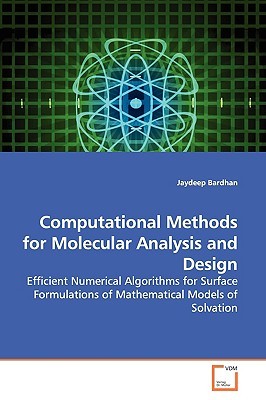
- We will send in 10–14 business days.
- Author: Jaydeep Bardhan
- Publisher: VDM Verlag
- ISBN-10: 3639142616
- ISBN-13: 9783639142617
- Format: 15.2 x 22.9 x 1.1 cm, softcover
- Language: English
- SAVE -10% with code: EXTRA
Computational Methods for Molecular Analysis and Design (e-book) (used book) | bookbook.eu
Reviews
Description
The text presents a set of numerical techniques that extend and improve computational modeling approaches for biomolecule analysis and design. The presented research focuses on surface formulations of modeling problems related to the estimation of the energetic cost to transfer a biomolecule from the gas phase to aqueous solution. Four contributions to modeling biomolecular interactions are presented. The first section describes an approach to allow accurate discretization of the most prevalent definitions of the biomolecule-solvent interface, and numerical methods for numerically integrating possibly singular functions over these discretizations. The second section presents a fast multiscale numerical algorithm, FFTSVD, that efficiently solves large problems in biomolecule electrostatics. The third part describes an integral-equation formulation and boundary-element method implementation for biomolecule electrostatic analysis. The final section details an efficient numerical method for calculating a biomolecular charge distribution that minimizes the free energy of binding to another molecule. This approach represents a novel PDE-constrained optimization technique.
EXTRA 10 % discount with code: EXTRA
The promotion ends in 16d.09:25:41
The discount code is valid when purchasing from 10 €. Discounts do not stack.
- Author: Jaydeep Bardhan
- Publisher: VDM Verlag
- ISBN-10: 3639142616
- ISBN-13: 9783639142617
- Format: 15.2 x 22.9 x 1.1 cm, softcover
- Language: English English
The text presents a set of numerical techniques that extend and improve computational modeling approaches for biomolecule analysis and design. The presented research focuses on surface formulations of modeling problems related to the estimation of the energetic cost to transfer a biomolecule from the gas phase to aqueous solution. Four contributions to modeling biomolecular interactions are presented. The first section describes an approach to allow accurate discretization of the most prevalent definitions of the biomolecule-solvent interface, and numerical methods for numerically integrating possibly singular functions over these discretizations. The second section presents a fast multiscale numerical algorithm, FFTSVD, that efficiently solves large problems in biomolecule electrostatics. The third part describes an integral-equation formulation and boundary-element method implementation for biomolecule electrostatic analysis. The final section details an efficient numerical method for calculating a biomolecular charge distribution that minimizes the free energy of binding to another molecule. This approach represents a novel PDE-constrained optimization technique.


Reviews